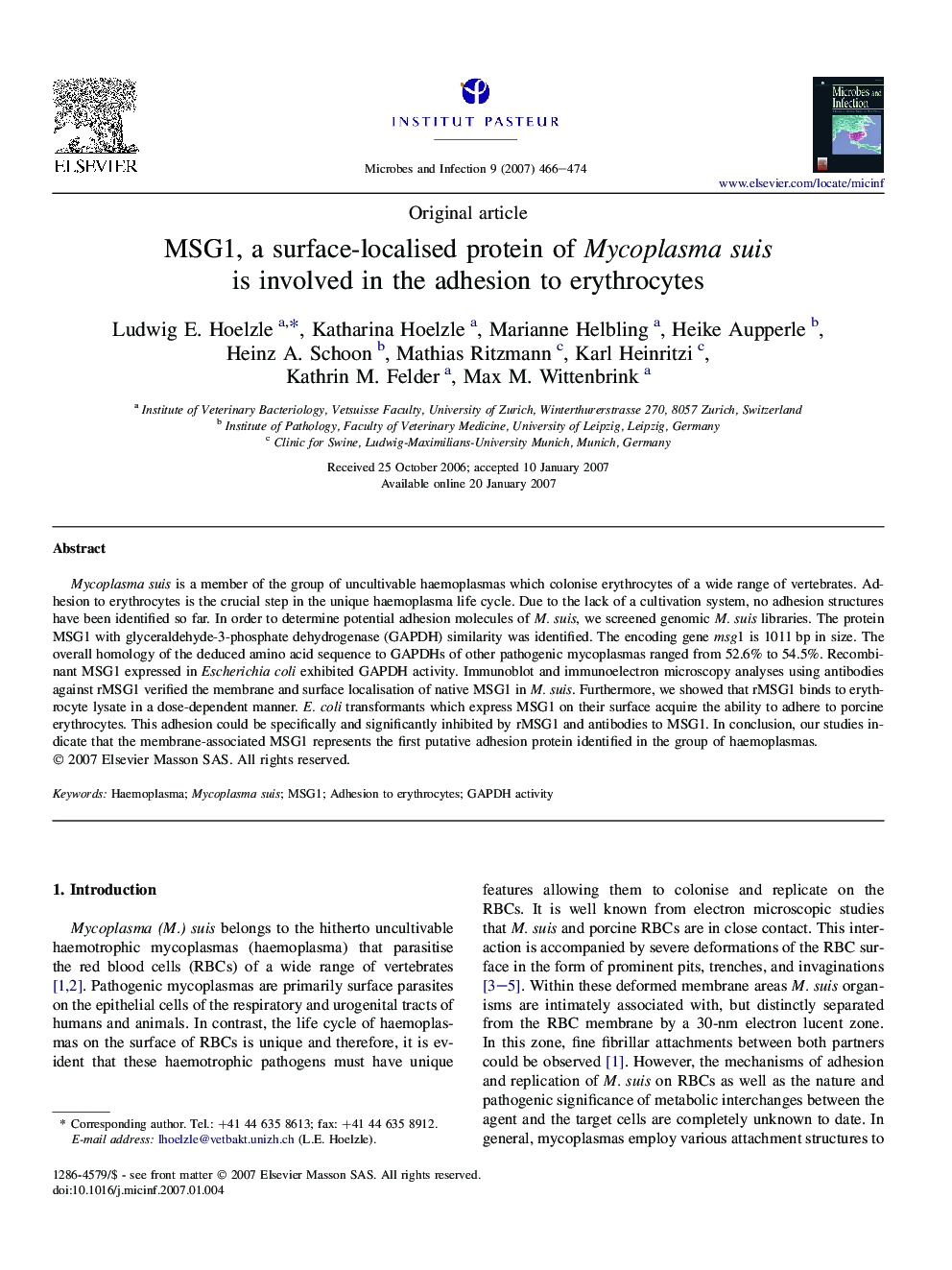| Article ID | Journal | Published Year | Pages | File Type |
|---|---|---|---|---|
| 3415887 | Microbes and Infection | 2007 | 9 Pages |
Mycoplasma suis is a member of the group of uncultivable haemoplasmas which colonise erythrocytes of a wide range of vertebrates. Adhesion to erythrocytes is the crucial step in the unique haemoplasma life cycle. Due to the lack of a cultivation system, no adhesion structures have been identified so far. In order to determine potential adhesion molecules of M. suis, we screened genomic M. suis libraries. The protein MSG1 with glyceraldehyde-3-phosphate dehydrogenase (GAPDH) similarity was identified. The encoding gene msg1 is 1011 bp in size. The overall homology of the deduced amino acid sequence to GAPDHs of other pathogenic mycoplasmas ranged from 52.6% to 54.5%. Recombinant MSG1 expressed in Escherichia coli exhibited GAPDH activity. Immunoblot and immunoelectron microscopy analyses using antibodies against rMSG1 verified the membrane and surface localisation of native MSG1 in M. suis. Furthermore, we showed that rMSG1 binds to erythrocyte lysate in a dose-dependent manner. E. coli transformants which express MSG1 on their surface acquire the ability to adhere to porcine erythrocytes. This adhesion could be specifically and significantly inhibited by rMSG1 and antibodies to MSG1. In conclusion, our studies indicate that the membrane-associated MSG1 represents the first putative adhesion protein identified in the group of haemoplasmas.
